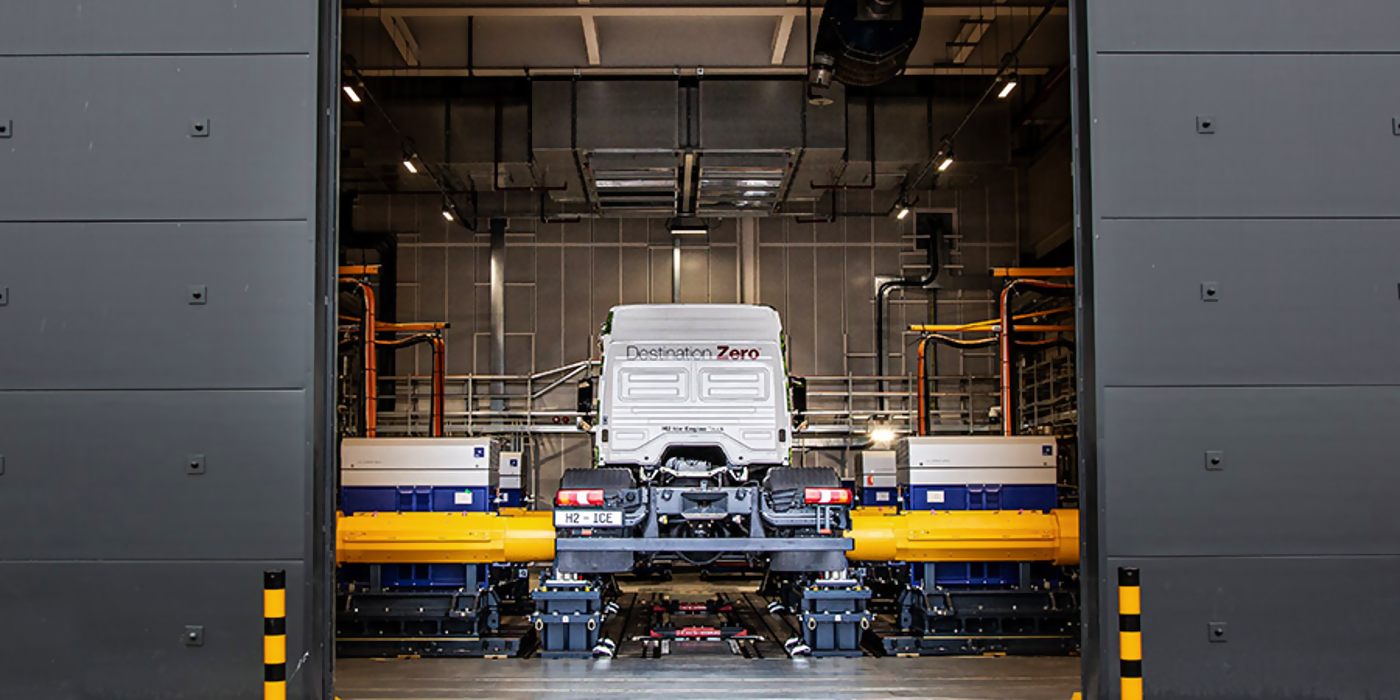
Cummins says the new dyno facility positions the company at the forefront of ultra-low and zero emissions powertrain technologies as the industry shifts its focus to reducing greenhouse gas emissions and improving efficiency — but the steps they take to keep staffers safe from hydrogen should give H enthusiasts pause.
An expansion of its European Technical Operations functions, Cummins announced the official opening of its new, fuel agnostic Powertrain Test Facility at the company’s Darlington, UK campus last week.
The new dyno facility enables higher, harder torque hits than the company’s older, “rolling road” type test rigs, which Cummins says is important as it works to develop a wider range of vehicles with electric motors powered by batteries or hydrogen. And, as I alluded to above, Cummins took a number of safety measures to be sure the facility was safe for hydrogen — which makes sense (you want to be safe, after all). Still, considering all the hype about battery fires, you’d think the hydrogen would be less of a concern.
See how this reads to you:
With regards to hydrogen, the test area features a series of safety checks. These include sensors placed around the vehicle and the interior of the facility to monitor for fuel leaks. The interior walls are designed to protect test engineers in the event of an explosion, while exterior walls have specially-designed plates to help alleviate blast pressure.
Additionally, the HVAC system is capable of renewing all air in the chamber more than once per minute, which helps to prevent build up of dangerous gas pockets.
julian buckley, power progress international
Yikes!
Cummins put more than $16.5 million into its new test facility, which can accommodate vehicles ranging from LD and MD pickups, to massive, 44-ton OTR semi trucks and the UK’s famous double decker transit buses. While many of these only use one driven axle, both front and rear axles can be hooked up to dynamometers. With all wheels connected, the onboard systems can better simulate conditions on real roads, again helping to deliver more accurate data as it calibrates its powertrains.
Top comment by OV
I've worked in facilities that have had both hydrogen gas piped in and dyno rigs running. Gas monitoring for hydrogen is extremely normal for the gas, but I've never heard of detectors actually going off. It's one of those things where the probability of danger is low (as a bespoke facility, the risk is slightly higher than a sealed series manufacture system like a FCV powertrain, which will have gone through DFMEA, but still low) but the severity of the danger if something does happen is high. Monitoring and other safety systems are normal, although I'm surprised to see them called out in a job listing.
I'd be more nervous around the dyno rig, honestly. Experimental equipment running at potentially 10000rpm or higher? If something breaks at high speed, you'll be needing those blast shields. Personally, I reckon the content of that job listing says more about the nerves (and maybe even biases) of the person writing it than the hazards of hydrogen. I'd work there.
“(The new facility) is a key part of our Destination Zero strategy to reduce the greenhouse gas and air quality impacts of our products,” explains Jonathon White, Vice President, Engine Business Engineering at Cummins. “(We’re) helping our customers in their energy transition, whatever (powertrain) solution they choose.”
Electrek’s Take

Despite breaking ground on a new, $2 billion battery factory in Mississippi a few weeks ago, Cummins seems committed to not committing to a battery electric future. But, if anything is going to convince Cummins’ management that it’s impossible for hydrogen to effectively compete with battery electric (something VW Group’s MAN Trucks division has already figure out, by the way), it might just be a sketchy hydrogen incident.
Here’s hoping it doesn’t come to that. And, to any readers working at the new Darlington test facility: stay safe, gang!
SOURCE | IMAGES: Cummins, Power Progress.
FTC: We use income earning auto affiliate links. More.





Comments